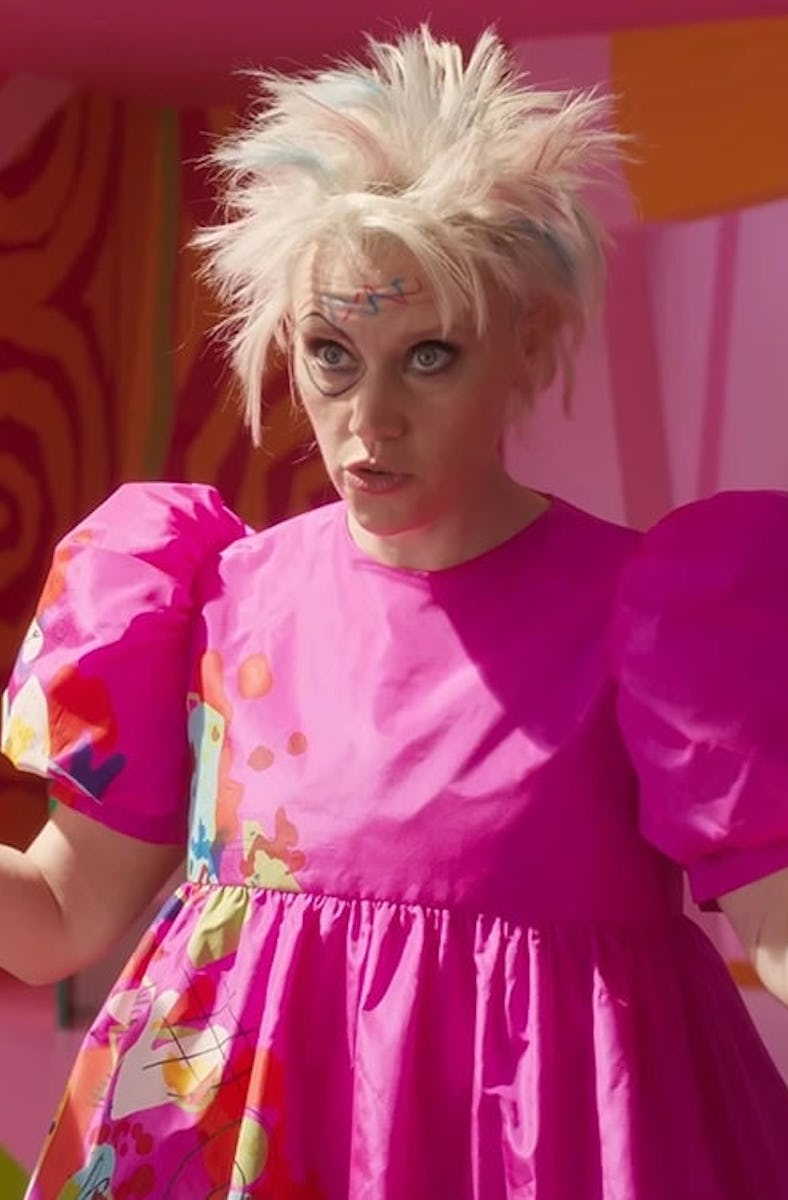Barbie's Greatest Strength Lies in Mattel's Weirdest Failures
The smash hit film is revolutionizing the way we think about "IP movies" by shining light in the shadows.

With Barbie, Greta Gerwig brought viewers to Barbieland: a candy-colored utopia where women rule the world and take comfort in knowing they revolutionized the world for women. Stereotypical Barbie (Margot Robbie) is having the best day over and over — until suddenly she’s not. Terrified, she goes to the all-knowing oracle of Barbieland: Weird Barbie (Kate McKinnon), the scissor-shorn, colored-on Barbie.
Weird Barbie represents everything that Mattel, the corporate owner of Barbie, would like to hide. She wears weird dresses, her hair is choppy, and her limbs are all akimbo from being played with too hard. The other Barbies are wary of her too; to them, Weird Barbie is the one blemish on the perfection of Barbieland. But Weird Barbie is more than just a gag — throughout the course of Barbie, she becomes the unlikely patron saint of all things that Mattel would rather forget. And these Barbie rejects — from discontinued Barbies to some of the more questionable Kens — embody the kind of subversive spectacle that Barbie has nailed.
Spoilers for Barbie follow.
Barbie’s Discontinued Friends
“Growing Up Skipper” made the process of puberty a bit too obvious.
When Barbie returns from the real world in the midst of an existential crisis, she finds comfort from Weird Barbie and the rejected Barbies and Kens she’s brought under her protection during Ken’s (Ryan Gosling) takeover of Barbieland. They appear at first to be one-off gags, but they’re all real-life Barbies and Kens that were ripped from the shelves for one reason or another.
There’s Midge (Emerald Fennell), the pregnant doll mentioned in the first moments of the movie who was discontinued because some thought it was promoting teen pregnancy, and of course Allan (Michael Cera) whose claim to fame is that “All of Ken’s Clothes Fit Him.”
But beyond them, there’s a whole fleet of other failures. Growing Up Skipper (Hannah Kalique-Brown) starts as a young tween but has the ability to grow breasts with a crank of her arm. She even had a similarly shaped friend named Growing Up Ginger. Both these dolls were discontinued after two years.
Tanner the Dog appears as a life-size dog who poops around Weird Barbie’s Weird House, but while this is adequately weird, it wasn’t the reason why this good boy ended up in the dustbin of Barbie history. The pooper scooper the included Barbie came with for the food/poop pellets contained a magnet that was reported to come loose, causing a nationwide recall in 2007. Good thing, too — nobody wants a kid to swallow a magnet while playing with dog poop.
The Reject Barbies and Kens
Barbie, Tanner — and a possibly dangerous pooper scooper.
But while there are Barbie-adjacent characters in the Weird House, there are actual Barbies and Kens too. (Even the fictional Proustian Barbie, played by Lucy Boynton, was supposed to appear but her scene didn’t make the final edit.)
Video Girl Barbie (Mette Towley) could be considered the first vlogging Barbie: her body was an actual video camera, with a video screen on her back. This caused an uproar in 2010 when media reported the FBI warned its agents that this doll caused a danger of child pornography. That wasn’t the case: they just meant to warn them not to overlook it in searches. Industry analyst Jim Silver summed it up to the AP when he said, "It's a doll, for Pete's sake."
On the Ken side, there’s Sugar Daddy Ken (Rob Brydon,) who (thankfully) was never made for children to play with — he’s part of the Barbie Collector’s Line. Just like in the movie, he’s called that because he’s the daddy of his dog Sugar, not for any untoward reasons. The doll was quietly discontinued in 2012.
Probably the most notorious Ken of all is Earring Magic Ken, the 1993 doll released as an effort to make Ken “cooler.” However, much to the delight of certain demographics of Barbie collectors, “cooler” meant a mesh shirt, purple pleather vest, a necklace that looked like the signifiers used by gay men, and, of course, an earring. It’s now a highly sought-after collectors item, even though they were ripped from the shelves.
The Importance of Barbie’s Misfit Toys
Video Girl Barbie was a real working video camera — which caught the attention of the FBI.
The scene mostly plays for comedy, but it actually represents the greatest tactic Barbie could possibly take: understanding the institution it’s adapting while still embracing the parts that some would rather forget. One of the biggest criticisms that have been made against Barbie is that it’s a movie about already existing intellectual property — an “IP movie.” While “IP movie” is usually seen as a derogatory term, often referred to a cash-grab or overblown high-budget spectacle, Barbie redefines this term in the most unexpected way.
By showing the Barbies who didn’t make the cut, Greta Gerwig highlights Mattel’s greatest “failures,” and shows that perfection is overrated. It’s the whole thesis of the film: women can’t be everything, not even Barbie. “Barbie seems so monolithic, and there’s a quality where it just seems as if she was inevitable, and she’s always existed. I think all the dead ends are a reminder that they were just trying stuff out,” she told The New Yorker. “Dealing with all the strangeness of it is a way of honoring it.”
This silly gag scene lets Barbie’s skeletons out of the closet, and embraces them in all their weirdness. It’s what makes Barbie the most sneakily subversive blockbuster in years.
Barbie is now playing in theaters.
This article was originally published on